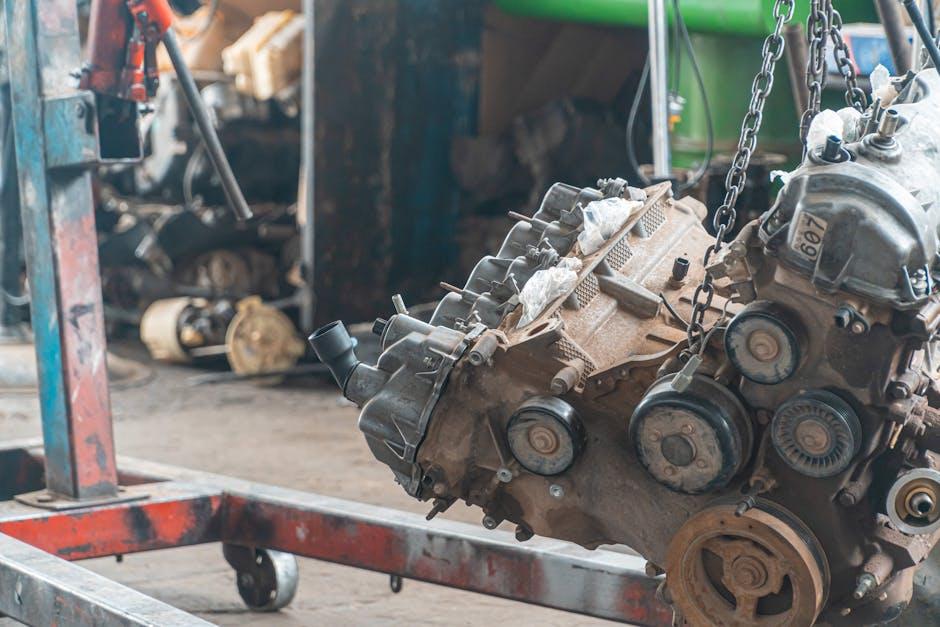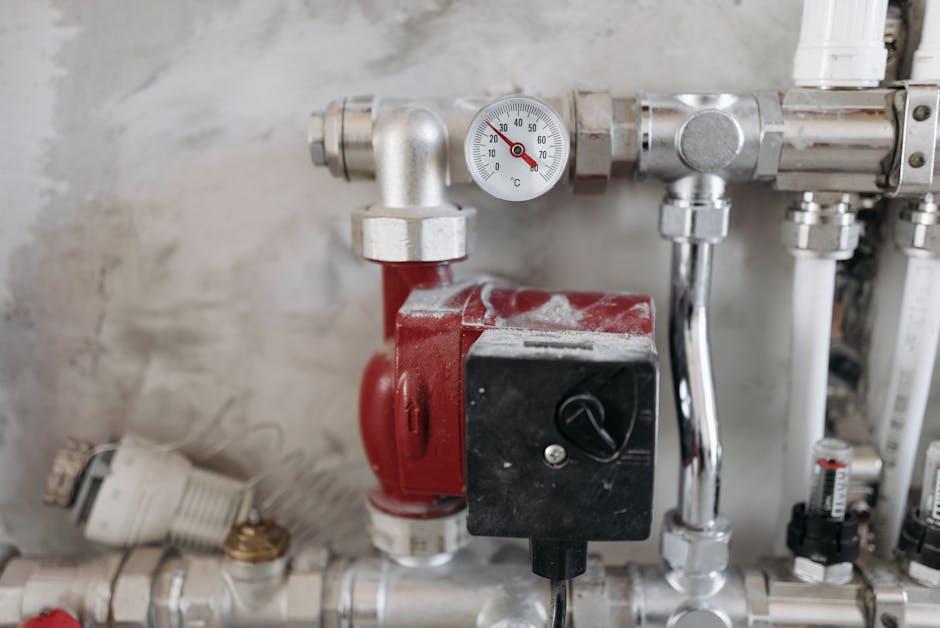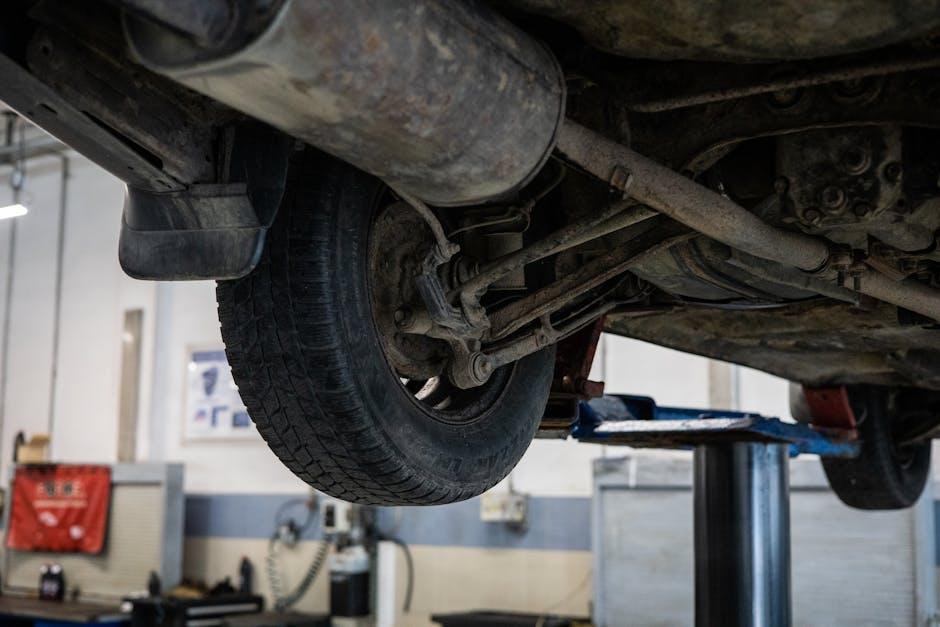Beneath the smooth glide of every car ride lies a complex network of springs, shocks, and struts working tirelessly to keep you comfortable and safe. The suspension system, often overlooked until it falters, plays a pivotal role in maintaining control, absorbing road bumps, and ensuring a balanced drive. But what happens when this intricate mechanism starts showing signs of wear? Recognizing the subtle—and sometimes glaring—indicators of a faulty suspension system can be the key to preventing costly repairs and safeguarding your journey. Let’s delve into the telltale signs that signal your suspension might be crying out for attention.
Table of Contents
- Common Symptoms Indicating Suspension Wear and Tear
- How Uneven Tire Wear Reflects Suspension Problems
- Understanding the Impact of a Faulty Suspension on Vehicle Handling
- The Role of Noises in Diagnosing Suspension Issues
- When to Seek Professional Suspension Inspection and Maintenance
- Practical Tips for Extending the Life of Your Suspension System
- Q&A
- The Way Forward

Common Symptoms Indicating Suspension Wear and Tear
When your vehicle’s suspension starts to falter, it often makes itself known through a variety of noticeable changes in driving behavior and vehicle response. Some of the most telling indicators include excessive bouncing after hitting a bump, making the ride feel unstable and uncomfortable. You might also detect a knocking or clunking noise when driving over uneven surfaces, signaling worn-out components struggling to absorb shocks properly. Another common signal is uneven tire wear, which occurs as the suspension fails to evenly distribute the vehicle’s weight.
- Steering drift or the car pulling to one side
- Reduced braking efficiency causing longer stopping distances
- Visible sagging or leaning of one corner of the car
- Vibration or shaking felt through the steering wheel or chassis
| Symptom | Possible Cause | Suggested Action |
|---|---|---|
| Uneven tire wear | Misaligned suspension | Get alignment checked |
| Excessive bounce | Worn shock absorbers | Replace shocks or struts |
| Steering pull | Damaged suspension components | Inspect and repair joints |
| Clunking noises | Loose or damaged bushings | Tighten or replace parts |

How Uneven Tire Wear Reflects Suspension Problems
When you notice that your tires are wearing unevenly, it’s often a hidden signal that your suspension system might be struggling to keep your vehicle properly aligned and balanced. Components such as shocks, struts, and ball joints play critical roles in maintaining even tire contact with the road surface. When these parts begin to fail or wear out, they cause irregular pressure distribution across the tires, resulting in patches of excessive wear. For example, a damaged shock absorber may allow the tire to bounce uncontrollably, creating scalloped or cupped tread patterns.
Regular checks can help identify the specific suspension issue by observing how the tires wear. Certain wear patterns correspond to distinct suspension problems, as outlined in the table below:
| Wear Pattern | Likely Suspension Issue | Effect on Handling |
|---|---|---|
| Feathered tread edges | Misaligned steering components | Steering pull and reduced stability |
| Cupped or scalloped wear | Worn shock absorbers or struts | Increased vibration and noise |
| Uneven inner or outer shoulder wear | Bad ball joints or bushings | Uneven steering response |
- Early diagnosis: Can prevent more extensive suspension damage
- Safety: Enhances vehicle control and accident prevention
- Cost savings: Avoids premature tire replacement

Understanding the Impact of a Faulty Suspension on Vehicle Handling
When your vehicle’s suspension begins to fail, the effects on handling can be immediate and detrimental. The suspension system is crucial for absorbing shocks and maintaining tire contact with the road, so any malfunction can lead to uneven tire wear, reduced steering precision, and a rough, uncomfortable ride. Drivers may notice increased body roll when cornering, a tendency to pull to one side during braking, or a general feeling of instability at higher speeds. These symptoms not only compromise comfort but also jeopardize the safety of every journey.
Key signs to watch for include:
- Excessive bouncing: The car continues to bounce after hitting a bump.
- Uneven tire wear: Tires show patches of wear that suggest poor road contact.
- Steering difficulties: The wheel feels loose or the vehicle drifts during turns.
- Strange noises: Clunking or squeaking sounds from suspension components when going over rough terrain.
| Symptom | Effect on Handling | Potential Cause |
|---|---|---|
| Vehicle Pulls to One Side | Reduced braking stability | Worn shock absorbers or misaligned suspension |
| Excessive Bouncing | Instability over road irregularities | Damaged or weak springs |
| Steering Wheel Vibrations | Impaired steering response | Imbalanced or damaged suspension components |

The Role of Noises in Diagnosing Suspension Issues
Unusual sounds coming from your vehicle’s undercarriage often serve as the first audible warning of suspension troubles. Clunks, squeaks, and rattles can indicate problems ranging from worn bushings to loose components or damaged shock absorbers. For example, a clunk noise during bumps or turns might suggest a loose sway bar link, while creaking during slow maneuvers often points to dried-out or deteriorated suspension joints. Paying close attention to these noises not only helps pinpoint the issue but can also prevent further damage if addressed promptly.
To better understand the nature of these alerts, here’s a quick reference table detailing common suspension noises and their likely causes:
| Noise Type | Common Cause | Typical Driving Scenario |
|---|---|---|
| Clunk | Loose or worn ball joints | Going over bumps or uneven roads |
| Squeak | Dry bushings or shock mounts | Slow turns or parking maneuvers |
| Rattle | Damaged strut or loose hardware | Driving on rough roads |
- Consistent noises during specific movements often highlight exactly which components require inspection.
- Intermittent sounds might suggest early-stage wear and thus a preventative repair opportunity.
- Ignoring these auditory cues can cause worsening suspension damage and compromise driving safety.

When to Seek Professional Suspension Inspection and Maintenance
Noticing irregular handling or unusual noises from your vehicle? These could be subtle whispers from your suspension system urging you to take action. If you experience excessive bouncing, steering difficulties, or uneven tire wear, it’s a clear sign that a professional suspension check is overdue. Don’t wait for a complete breakdown; early intervention can save you from costly repairs and ensure a safer ride.
Keep an eye out for these specific symptoms and schedule an inspection without delay:
- Vibrations or shaking while driving over smooth surfaces
- Pulling to one side when braking or turning
- Leaking fluid around shock absorbers or struts
- Noticeable sagging on one corner of the vehicle
| Symptom | Urgency Level | Recommended Action |
|---|---|---|
| Excessive Bounce | High | Immediate Inspection |
| Uneven Tire Wear | Medium | Check Suspension & Alignment |
| Steering Pull | High | Professional Diagnosis |
| Fluid Leaks | Critical | Urgent Repair Needed |

Practical Tips for Extending the Life of Your Suspension System
Regular maintenance is the cornerstone of a durable suspension system. Frequently inspect your vehicle for any uneven tire wear, which can be an early indicator of suspension issues. Ensure to keep your tires properly inflated and balanced to avoid added stress on suspension components. Additionally, pay attention to the alignment of your wheels; misaligned wheels not only wear tires unevenly but also cause premature wear to critical suspension parts. Incorporating routine checks into your driving habits helps catch minor problems before they escalate into costly repairs.
Driving habits also play a significant role in prolonging suspension life. Avoid aggressive maneuvers such as sudden sharp turns, abrupt braking, or consistently driving over potholes and rough terrain. If you must navigate rough roads, slow down to minimize the impact forces transmitted through the suspension. Here are a few practical habits to adopt:
- Maintain a moderate speed when driving over speed bumps and uneven surfaces.
- Schedule routine inspections with a trusted mechanic to check for worn shocks, struts, and bushings.
- Replace suspension components promptly as recommended by your vehicle manufacturer to avoid cascading failures.
| Tip | Benefit |
|---|---|
| Regular Shock Absorber Check | Improves vehicle stability and ride comfort |
| Timely Tire Rotation | Promotes even tire wear and reduces suspension strain |
| Avoid Overloading | Prevents excessive stress on springs and joints |
Q&A
Q&A: Recognizing the Signs of a Faulty Suspension System
Q1: What exactly is a vehicle’s suspension system?
A1: Think of the suspension system as your car’s personal shock absorber and balance expert. It’s a network of springs, shock absorbers, and linkages designed to provide a smooth ride by absorbing bumps and keeping your tires firmly on the road.
Q2: Why is it important to monitor the suspension system’s health?
A2: A faulty suspension doesn’t just make for an uncomfortable ride—it can compromise your vehicle’s handling and safety. Ignoring early warning signs can lead to increased tire wear, poor steering response, and even accidents.
Q3: How can I tell if my suspension system is failing?
A3: Here are some classic red flags to watch for:
- Bumpy or harsh rides: If every pothole feels like a heart attack, your shocks or struts might be worn out.
- Uneven tire wear: Notice bald patches or uneven tread? Your suspension might not be keeping tires properly aligned.
- Vehicle leaning: If your car leans to one side while parked or during turns, it could be a broken spring or damaged shock.
- Nose-diving during braking: When the front dips dramatically under braking, the front shocks may be compromised.
- Excessive bouncing: Push down on your car’s hood and release; if it bounces more than once or twice, the shocks need a checkup.
- Steering wander or poor handling: Feeling like the car drifts on the road or has decreased control? The suspension might be to blame.
Q4: Are these signs always easy to spot?
A4: Not always. Some issues start subtly. That slight tug to one side or a faint clunk noise might be dismissed until they worsen. Regular inspections are your best ally.
Q5: What should I do if I suspect suspension problems?
A5: Don’t delay—schedule a professional suspension inspection. Early repairs save money and ensure your safety on every journey.
Q6: Can I drive with a faulty suspension system?
A6: It’s best to avoid long drives or high speeds if you suspect suspension trouble. Compromised handling increases risks of accidents, so addressing issues promptly is crucial.
Q7: How often should I get my suspension checked?
A7: A good rule of thumb is to have it inspected during routine maintenance, especially after 50,000 miles or if you regularly drive on rough roads.
Staying alert to these signs is like listening to your car’s subtle cries for help. A healthy suspension keeps your ride smooth, safe, and enjoyable—so give it the attention it deserves!
The Way Forward
In the intricate dance between your vehicle and the road, the suspension system plays the role of silent guardian—absorbing shocks, maintaining balance, and ensuring comfort. Recognizing the subtle signs of its faltering health can mean the difference between a smooth journey and a rough ride riddled with risks. By staying attuned to these early warnings, you not only protect your car’s performance but also prioritize your safety and peace of mind. After all, a well-tuned suspension is not just about comfort—it’s the foundation of control and confidence every time you take the wheel.


5 Comments
iwwmny
iwwmny
v9boly
6pi29c
ze2q01